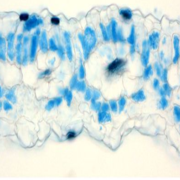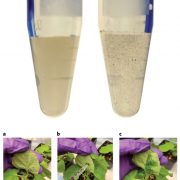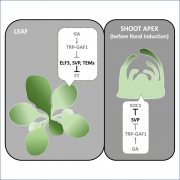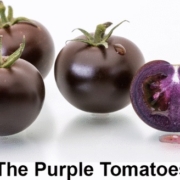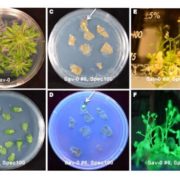Photoperiod-insensitive flowering is associated with the FT gene in hemp
 Cannabis sativa, also known as hemp or marijuana, is a widely cultivated plant for a variety of reasons. It is perhaps best known as a producer of an intoxicating chemical, THC, produced by glandular trichomes on female flowers, but low-THC producers (hemp) are cultivated for fibers. Flowering time affects both THC and fiber production, and various cultivars have a wide range of flowering-time responses. Here, Dowling et al. explored the genetic basis for photoperiod insensitive flowering time in the cultivar FINOLA. They identified a candidate locus, Autoflower2, that includes a tandem duplication of CsFT1, an ortholog of FLOWERING LOCUS T (FT). Interestingly, in photoperiod sensitive cultivars, this gene exists in a single copy. Furthermore, the expression of the genes in FINOLA is photoperiod insensitive, whereas it is only expressed in flower-inducing conditions in photoperiod sensitive cultivars. The authors surveyed a population of cultivars and found a correlation with the FINOLA-type CsFT1 locus and photoperiod insensitivity, although other genes are likely to contribute as well. (Summary by Mary Williams @PlantTeaching) Plant J. 10.1111/tpj.16769
Cannabis sativa, also known as hemp or marijuana, is a widely cultivated plant for a variety of reasons. It is perhaps best known as a producer of an intoxicating chemical, THC, produced by glandular trichomes on female flowers, but low-THC producers (hemp) are cultivated for fibers. Flowering time affects both THC and fiber production, and various cultivars have a wide range of flowering-time responses. Here, Dowling et al. explored the genetic basis for photoperiod insensitive flowering time in the cultivar FINOLA. They identified a candidate locus, Autoflower2, that includes a tandem duplication of CsFT1, an ortholog of FLOWERING LOCUS T (FT). Interestingly, in photoperiod sensitive cultivars, this gene exists in a single copy. Furthermore, the expression of the genes in FINOLA is photoperiod insensitive, whereas it is only expressed in flower-inducing conditions in photoperiod sensitive cultivars. The authors surveyed a population of cultivars and found a correlation with the FINOLA-type CsFT1 locus and photoperiod insensitivity, although other genes are likely to contribute as well. (Summary by Mary Williams @PlantTeaching) Plant J. 10.1111/tpj.16769


